Valve
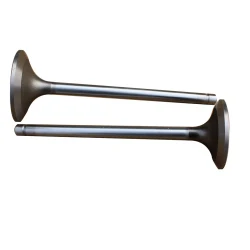

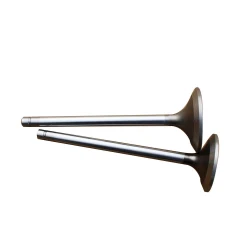
The car engine is the beating heart and the source of its motive power, which is formed by the combination of numerous parts and, with their cooperation, manages to generate the necessary force to move the wheels. Each of the engine parts has its own importance. Because the improper performance of each can lead to a decrease in engine efficiency or face them with a serious problem. Sometimes a defect in one part of the engine can cause damage and wear to some other parts, and sometimes even the engine completely breaks down due to a problem in one part and does not even turn on. The valve is one of these engine parts that you have probably heard its name a lot, but not much has been said about its duties and how it works. Therefore, sufficient knowledge and understanding of the duties of each of these parts in the engine is necessary for optimal use of the car.
What is a valve and what are its functions?
A valve, a word of French origin (Soupape), literally means a gate. The valve is one of the main parts of various internal combustion engines and is also used in other engines such as water pumps. In fact, a valve refers to anything that controls the entry and exit of something. The valve in the car is located on the cylinder head and controls the intake and exhaust of air. More precisely, this mushroom-shaped piece is responsible for controlling the entry of air into the combustion chamber and the exit of smoke from the cylinder head valves. This incoming air is necessary for the formation of the fuel and air mixture and the explosion, and the outgoing air or smoke is also the combustion surplus, the exit of which is necessary for the continuation of the engine operation process.
Considering that combustion inside the cylinders requires an isolated and impermeable space, it should be said that another function of the car valve is to provide this space with the help of the cylinder head and the cylinder head gasket. Therefore, the valves, with appropriate timing in motion and timely opening and closing of the cylinder block or cylinder head valves, both direct smoke and air in the direction they should and also form an impermeable combustion chamber. According to the description of the valve functions, it can be said that a good valve has these characteristics:
It has a high thermal coefficient and is capable of withstanding high heat. It also transfers its heat well to the cylinder head body.
High heat does not cause burning or corrosion in it.
It has the necessary resistance against impacts.
A good valve does not wear out quickly.
Valves are placed on the cylinder head or cylinder block depending on the type of engine. Sometimes the valves are inside the cylinder or cylinder head.
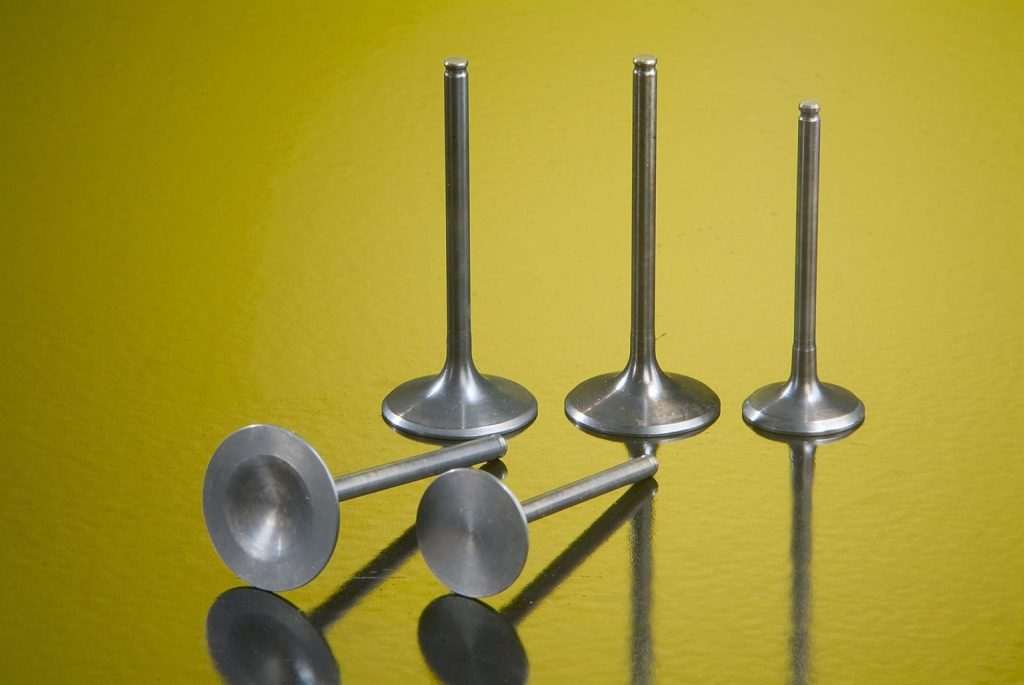
Introduction to the structure of a car valve
The car valve has a mushroom-like structure that is constant in all types of engines. This fixed shape is in the form of a stem and a flat plate that form something similar to the stem and cap of a mushroom. The different parts of this piece are:
- Valve head: The place where this piece collides with the horse.
- Keeper notch: It is at the end of the stem and below the valve head and is the place of connection of the valve springs.
- Valve stem: The long and stretched body of the valve that is placed in the gate.
- Conical: This part, also called the skirt, is the place of connection of the seat to the stem.
- Seat: This part is also called the engine valve seat, which is actually the wide head of the valve. The valve seat has rings, the material of which is usually centrifugal cast iron or a very wear-resistant alloy.
- Face: The valve seat has a beveled edge called the face. The angle of this edge is designed according to the type and structure of the engine. But in general, this angle is between 45 to 30 degrees. 30 degrees is used for smoke valves and 45 degrees is used for air valves.
But this general structure also has other parts that complete its function. These parts include the following:
- Valve spring: A coiled spring that is located on the end part of the car valve stem and is connected to the engine body on one side and is connected to the valve notch by a retainer or flat washer on the other side. The spring helps the valve to sit firmly on the seat during compression and prevents any leakage at these times. Sometimes two springs are mounted in reverse direction on each valve. If the pressure of the valve springs is low, the valve becomes loose and stiff and the engine works unevenly.
- Valve guide: A tube or bushing that accommodates the valve stem. The guide or valve guide is usually made of black cast iron. This piece, which is located on the cylinder head, regulates the straight reciprocating movement of the valve and prevents any deviation from it. It also protects the valve stem against impacts. The guide is either cast as a single piece with the cylinder or cylinder head or is pressed into it. The guide also has the task of transferring heat. The valve moves within the guide with a specific clearance. This movement must be smooth because if it is stiff, the valve heats up and gets stuck inside and remains open.
- Valve lifter: It is located at the end of the engine valve and close to the valve head and plays the role of connecting the valve to the valve rod. The lifter is not used in all engines and sometimes the car valve is directly connected to the valve rod.
In some valves, a seat bushing is also used, which prevents its wear. The use of a seat bushing is not very common.
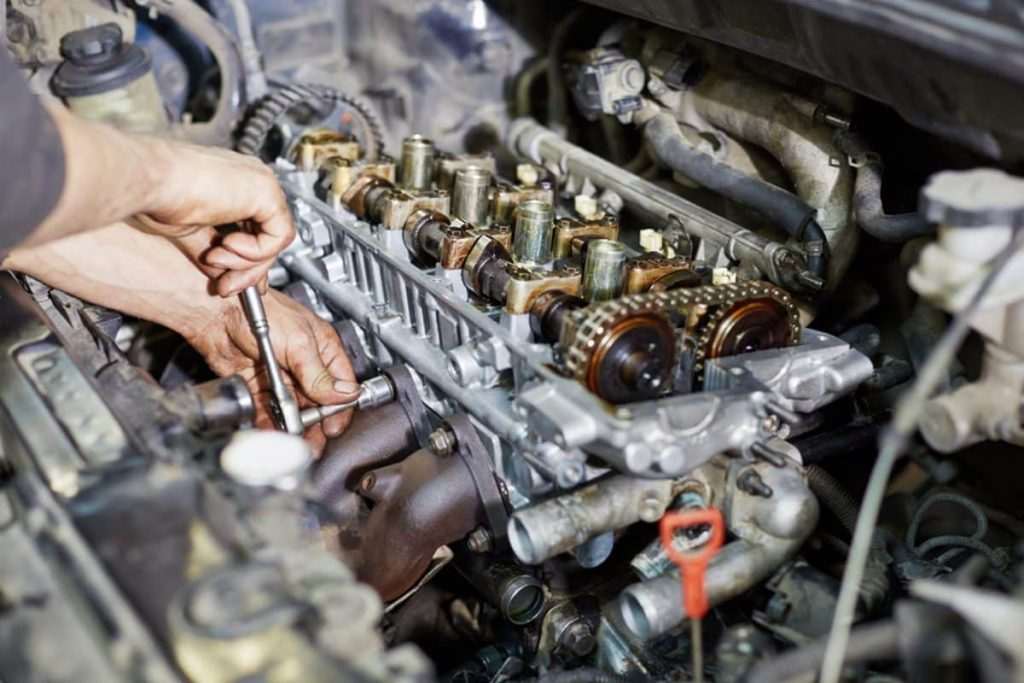
Types of Valves
Valves are divided into two categories based on their function, which have minor differences in their structure. These two types include the following:
Intake or Air Valve
It is slightly larger than the exhaust valve and has a lower heat resistance.
Exhaust Valve
Due to its exposure to the high temperature of the combustion chamber, it has a higher thermal resistance, but due to its lower sensitivity in terms of insulation, its size is smaller.
But the car valve has another type of classification that depends on their movement and operation. These types include:
Rotary Valves
These valves have a special part that rotates the valve simultaneously with the up and down movement, this rotation prevents the formation of deposits in the seat and guide.
Sodium Valves
This model of valve is hollow and is filled with metallic salt sodium which has a low melting point. This substance melts due to the heat of the valve and moves up and down inside it with the work and movement of the valve, and transfers the heat of the seat to the guide.
The size and overall structure of the valves in different engines are the same and their differences are very minor depending on the engine structure.
The material of the car valve
The location and type of work of the valves indicate that these parts are exposed to high temperatures and also work at high speeds. Therefore, they are subject to considerable pressure and wear. Among these, the exhaust valve or smoke valve, which is in contact with the gases resulting from combustion and almost a continuous flame, tolerates higher heat than the intake or air valve. So much so that when the engine is running at high speeds, this car valve may turn dark red. Therefore, the car valve must have the necessary resistance against fracture, rust, endurance, and rapid wear, especially exhaust valves. So this type of valve is usually made of special steel alloys with relatively high amounts of chromium, nickel, and selenium. The condition of the air valves is much cooler than the smoke valves, so they are less exposed to burning, rusting, and wear. They are usually made of steel-cobalt alloy.
Valve Steering Device
The valve needs a controller and guide for its movement and operation. This part is the valve stem or camshaft. The valve stem is a rod that has almond-shaped protrusions called cam. The number of cams on a valve stem is designed based on the number of engine valves. In fact, because of this function and shape, it is called a camshaft or valve stem. The cams are in contact with a valve finger or the valve itself. The valve receives various commands from this rod. In general, we have two types of valve stems:
Under Valve Stem
In this type, the valve stem is in contact with a piece called a tappet, which the tappet rod passes through. The tappet rod is in contact with the finger from above and controls the valve movement with the movement of the finger, which is in contact with the valve in the other direction.
Over Valve Stem
In this type, the valve stem is directly in contact with the finger through the cams, and the finger also collides with the valve from the other side.
In cars that use this valve stem, two valve stems are used. In the engine of these cars, we have 4 valves for each cylinder.
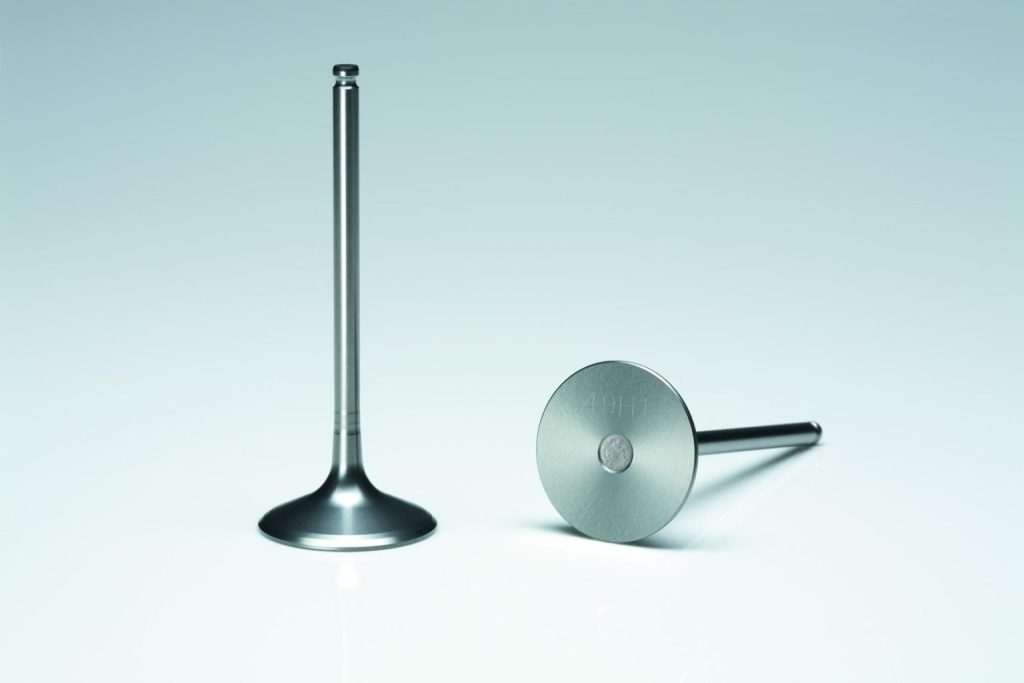
Setting the Timing of Valve Operation
In the process of valve operation, the timing of their opening and closing is very important. In this way, the intake valves should let air into the cylinder at appropriate times. Then, during the stages of compression and combustion of fuel, they should remain completely tight and closed. Finally, when discharging, they should expel the combustion gases from the cylinder at the right time. Therefore, the timing of the valves must be done very accurately and completely. We said earlier that the timing of the valve operation is the responsibility of the camshaft. But since the timing of the up and down movement of the valves must be synchronized with the up and down movement of the pistons, the camshaft does this work with the help of the connecting rod and in constant and permanent contact with it. Because the connecting rod is always rotating under the influence of the up and down movement of the pistons and synchronizes the movement of the camshaft with the pistons by connecting the camshaft and the connecting rod. This synchronization also follows the precise timing of the valves in sync with the piston.
In this way, at the moment of the piston’s descent, the camshaft opens the intake valve to suck air into the cylinder. Simultaneously with the start of compression of the incoming air by the cylinder, both the air and smoke valves remain closed, and this state continues until the end of combustion. At this moment, the upward movement of the piston opens the smoke valve and remains open until the piston reaches the top dead center. The transfer and adjustment of force in this process is done by the timing belt or timing chain. This timing process is called valve timing. Parts such as camshaft, tappet or lifter, push rod, valve horse, valve finger, and valve springs play an effective role in valve timing and its precise adjustment. Of course, the type, location, and order of placement of the valves may eliminate some of these parts. This set of parts is called the valve startup system.
Types of Car Engine Valve Systems
T HEAD or Double Row Standing Valve System
This method, which was used in old cars, has two camshafts. One controls the smoke valves and the other controls the gas valves. The advantages of this system include the simplicity of the design and the air and smoke inlet and outlet paths, better washing of burnt gases from the combustion chamber, and fewer moving parts of the system. But its disadvantages include the large size and length of the combustion chamber, the movement of the valve towards the sides of the chamber and as a result, the decrease in engine efficiency, the lengthening of the flame path, the increase in the width of the engine block, and the need to use two camshafts. In addition to the mentioned disadvantages, the higher production cost of this system should also be mentioned.
L HEAD or Standing Valve System
This method is newer than the T system and in it, all smoke and gas valves, which are located on one side of the cylinder block in a standing position, are controlled by one valve stem. In this system, the path of gas inlet and outlet is in the shape of L. In this system, the combustion chamber is smaller and its filling form is also different. These two together cause better combustion and the volumetric efficiency of the engine reaches 88 percent. In this system, the valves move with the help of a tappet. Its main advantages are the use of a camshaft, which reduces costs. Easier repairs and simpler opening of the cylinder head and better fuel burning are other advantages of this system. Its disadvantages include the complex design of the manifolds and the presence of an extra tappet piece.
F HEAD or Combined Valve System
In this system, the gas valve is suspended in the cylinder head and the exhaust valve is positioned upright. This arrangement helps control the cylinder filling process due to the downward flow of fuel. The exhaust and gas exit path in this system is in the shape of an F. We usually see this system in 4-stroke engines. These systems sometimes have the problem of improper spark plug location and the explosion site becoming too long to the center of the cylinder.
I HEAD or Overhead Valve System
In this method, both the gas and exhaust valves are in the cylinder and suspended, and the gas exit and smoke entry path is a straight line in the shape of an I. This system increases the volumetric efficiency of the engine to 90 percent. This system is also more commonly used in 4-stroke engines. Repairing these systems is harder than other systems, but it reduces the combustion space and minimizes the explosion distance to the center of the cylinder as much as possible.
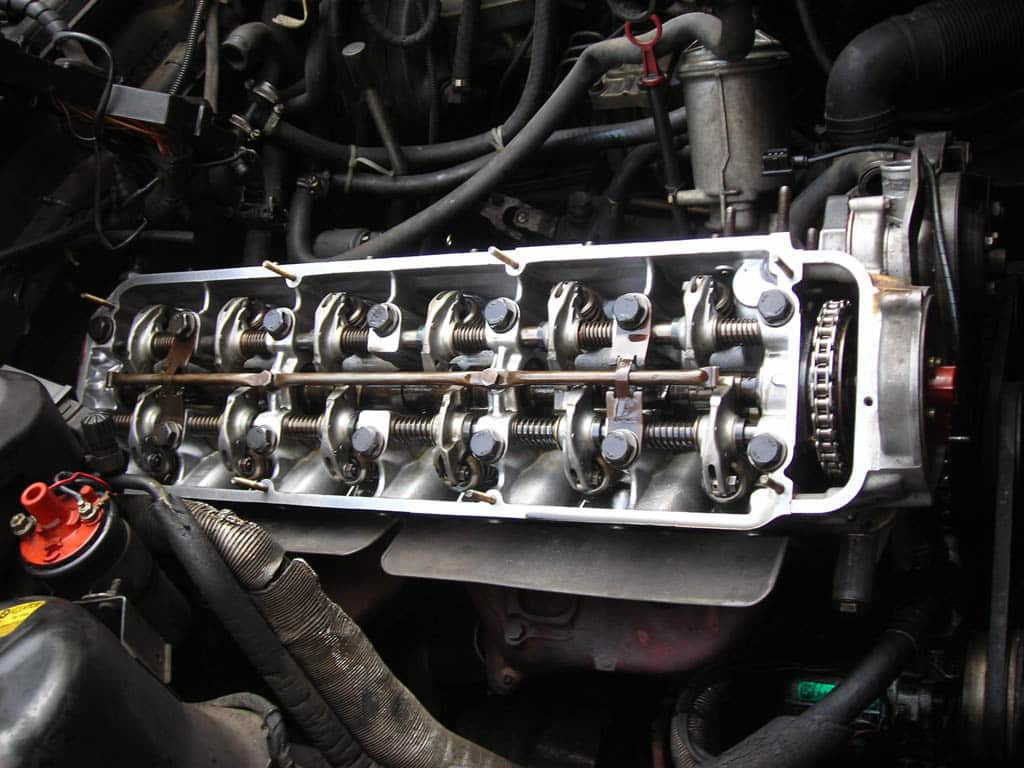
Variable Valve Timing System
We said that the timing of the opening and closing of the valves depends on the rotation of the camshaft. The rotation of the camshaft is also regulated by the piston movement via the connecting rod. Therefore, the opening and closing of the valves occur exactly in order and at a specific time interval based on the engine speed. This valve timing system has been used in combustion engines for years and is the usual way of managing valve timing. But recently, a system has been introduced by designers called VVT or Variable Valve Timing. In this system, the air valve can stay open longer regardless of the piston’s position. Adjusting this longer time is made possible by the intelligent management of the valve operation. The VVT system helps increase the engine’s power at different speeds and reduce fuel consumption. In this system, the structure of the car’s valve shaft is designed slightly differently. The Variable Valve Timing system overcomes the shortcomings of previous systems that prevented more fuel and air mixture from being injected into the cylinder.
Difference between 8 and 16 valve engines
You’ve probably heard a lot about the 8 or 16 valve features of different engines. In 8-valve engines, which were more commonly used in the past, each cylinder was equipped with one intake valve and one exhaust valve. However, these engines did not have satisfactory efficiency, and the engine power did not reach the designers’ desired level, plus their fuel consumption was high. But the design engineers knew that to improve engine performance, the amount of air and gasoline suction should be faster and more, and also the exhaust of smoke should be complete. Therefore, to achieve this goal, the number of valves increased to allow more intake and exhaust. So, in relatively new engines, each engine cylinder was equipped with 2 intake valves and 2 exhaust valves, which turned 4-cylinder engines into 16-valve engines.
It should be noted that of course, the more cylinders there are, these numbers increase. For example, 6-cylinder engines have 24 valves. Also, sometimes more valves are considered for each cylinder to produce engines with higher output power and higher power. This number can be upgraded to 3 intake valves and 2 exhaust valves.
Most Common Signs of Valve Failure
Valve failure usually results from problems such as stem breakage or seat failure. Sometimes a defect occurs in the guide. These symptoms are usually heard as a clunking sound or the sound of the engine running dry, and sometimes the engine performance decreases. The cause of valve failure could be one of the following:
Valve burn due to improper air-fuel ratio adjustment.
In engines with a timing belt, the timing belt rupture can lead to valve misalignment.
Sometimes, due to the cooling system failure, the cylinder gets too hot. In these cases, the valve seat may come out of its place and get damaged due to excessive heat.
Sometimes, valve guide failure creates a sound similar to the engine running dry.
Valve guide failure rarely happens and can be due to poor quality, excessive engine operation, or valve failure.
For the import of various types of spare parts, including spare parts for domestic and foreign cars, contact Tata Trading Company. Our connection with various companies around the world enables us to provide you with the best and highest quality spare parts from different brands, bringing you a profitable and easy trade.

